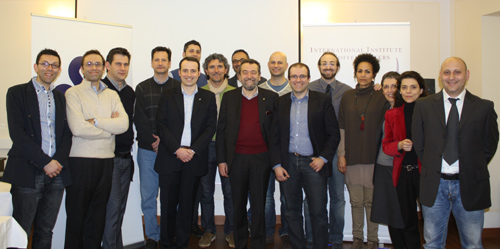Espresso Italiano Trainers: meet the first ambassadors of the Italian espresso
by Carlo Odello
Trainer and member of the board of the International Institute of Coffee Tasters

So here they are: the first Espresso Italiano Trainers are ready. Twelve professional coffee tasters who are now qualified to give seminars on behalf of the International Institute of Coffee Tasters. Twelve new ambassadors of our association who all share the same aim: to raise awareness about the culture of the true Italian espresso.
They are now ready to popularize espresso coffee culture through a new seminar entitled “Espresso Italiano Experience”, a teaching format which enables participants to learn the basics of espresso tasting. Participants will discover how to distinguish a top quality espresso from the growing numbers of poor quality cups now available on the market.
This offensive against bad coffee will not just be restricted to Italy: three of the twelve new Espresso Italiano Trainers will be operating abroad in the United States, Slovakia and Denmark. And, meanwhile, the first Japanese Espresso Italiano Trainers have also just qualified. We shall be giving further details about this in the near future.
The following are our new Espresso Italiano Trainers: Alfonso Paolone, Melania Lopez, Vittorio Ventura, Giovanni Ferraro, Remo Poli, Adolfo Vallini, Virgilio Lanzanova, Dario Manazza, Gennaro Buono, Massimo Pallard, Paolo Scimone and Sebastiano Garbellini.


